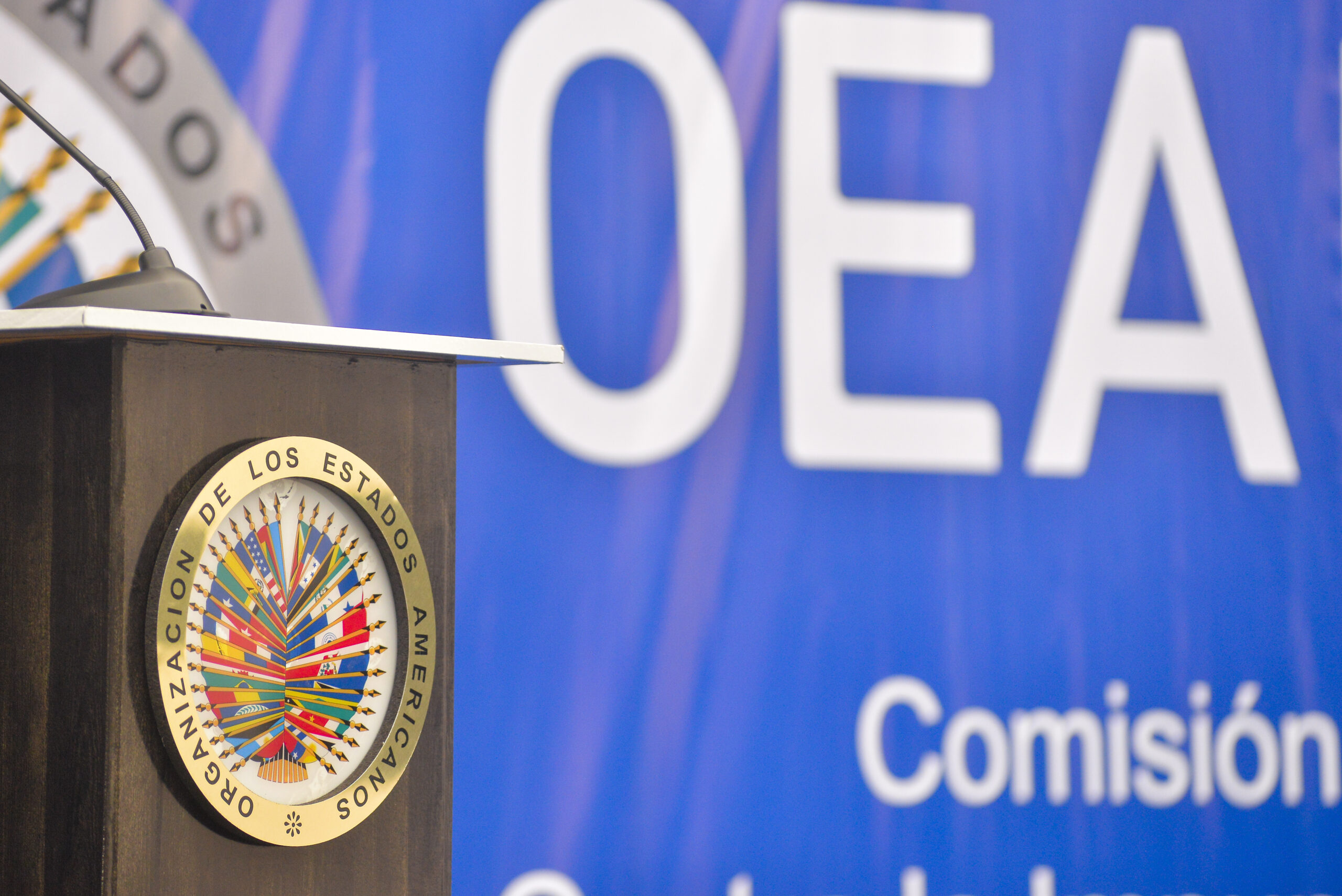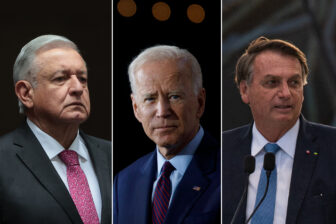SÃO PAULO – The upcoming Summit of the Americas, which will gather leaders from across the hemisphere in Los Angeles in early June, comes at an opportune time. The meeting will occur as Latin America faces its darkest hour in decades, including a profound crisis of democracy, an uneven economic recovery, two destabilizing migration crises and an ongoing pandemic. But for the gathering to succeed, the host, President Joe Biden, will need to overcome a series of hurdles.
One of them is a perception that these meetings are no longer useful. Indeed, the very idea of regional cooperation has fewer subscribers today. The optimism that shaped the first Summit of the Americas, held in Miami in 1994, is long gone. The most recent version is largely remembered for being the first not attended by the U.S. president, after Donald Trump skipped it. Many regional ideas, like a hemisphere-wide free trade agreement first floated in the 1990s, are long dead, while others, like the Inter-American Democratic Charter, adopted in 2001, have failed to live up to their potential.
Nevertheless, there will still be opportunity in Los Angeles. Biden promised to rebuild regional cooperation after, as he put it, Donald Trump took “a wrecking ball to our hemispheric ties.” That is a laudable goal. After all, most of the Western hemisphere’s most urgent challenges, from organized crime and environmental degradation to migration and sluggish economic growth, cannot be successfully addressed without taking a regional approach.
But it isn’t just the limited success of past summits that Biden will have to overcome. There are at least three additional obstacles ahead.
First, there is a risk that Central America’s “Northern Triangle,” Haiti and Venezuela will absorb most of the attention at the summit. This is somewhat understandable given the relevance of the migration crisis to domestic U.S. politics. But those countries account to about 10% of Latin America’s population. Leaders of larger countries like Argentina and Peru justifiably fear being left on the sidelines – with little to show for the long trek north when the summit is over.
Second, there’s a risk that geopolitical concerns about China and Russia will contaminate the U.S.’s relationships with its southern neighbors. For example, while numerous observers in Brazil thought Bolsonaro’s decision to visit Vladimir Putin at the height of the geopolitical crisis in Ukraine was a bad idea, U.S. pressure on Brazil to cancel the trip was seen in Brasília as an undue interference in Brazil’s affairs, and may have had the inadvertent effect of encouraging Latin American countries to preserve their ties to other major global powers. Given that the United States’ interests vis-à-vis Moscow and Beijing differ from the prevailing views in most Latin American capitals, the Biden administration should move these debates to closed-door meetings rather than making a push to include references to China and Russia in the summit declaration.
Finally, U.S. leaders should resist the temptation to frame too much of the conversation around ideology. After recent elections in Peru, Chile and Honduras, and with leftists leading in the polls in Colombia and Brazil, a simplistic and somewhat self-defeating logic has gained strength in Washington, that the emergence of center-left governments in Latin America – sometimes described as a new “pink tide” – are necessarily bad for the United States. Evan Ellis, a professor of Latin American studies at the U.S. Army War College, recently argued that there had never been a Latin America “as dominated by a combination of leftists and anti-U.S. populist leaders,” suggesting that left-wing governments are more open to closer ties with China.
This argument overlooks the fact that the U.S. has enjoyed highly constructive relationships with left-of-center governments in recent years in countries like Chile, Ecuador, Uruguay and Brazil. In fact, it is no exaggeration to say that U.S.–Brazil relations reached a high point during the early Lula years, when Washington largely welcomed Brasília’s growing willingness to take on regional responsibilities, such as leading the U.N. peacekeeping mission in Haiti.
Or consider how center-right governments – for example in Chile, Brazil and Uruguay – have dealt with China. Latin American leaders are far more pragmatic and less ideological than analysts such as Ellis believe. Chile’s conservative outgoing president Sebastián Piñera has undertaken significant efforts to strengthen ties to China and ignored U.S. pressure to limit the role of Huawei as a component provider in the construction of the country’s 5G network. Uruguay’s center-right president Luis Lacalle Pou has pressed forward with a free trade deal with China that could have enormous consequences for the region, and Brazil’s trade with China has grown significantly under far-right leader Bolsonaro.
On several fronts – such as the fight against climate change – leaders like Chile’s Gabriel Boric or Brazil’s Lula da Silva are likely to be much more constructive partners than Jair Bolsonaro or Chilean right-wing presidential runner-up José Antonio Kast, both of whom are critical of measures to combat climate change.
This is not to argue that this “new pink tide” is automatically good news for the United States. While some left-wing governments will be less keen to engage Washington, others, such as Honduras’s new president Xiomara Castro, may turn out to be a better partner than the governments they replace. But if the history of failed bids for regional cooperation in Latin America holds any lesson, it is that efforts to work together too often depended on ideological alignment of participating governments.
When it comes to strengthening cooperation in fighting the pandemic or transnational crime, rethinking the war on drugs or finding joint solutions to the migratory crises, successful proposals to strengthen regional cooperation should be crafted in a way that they withstand the next electoral cycle.
How to go about establishing durable hemispheric cooperation? Rather than proposing ambitious but hard-to-achieve goals, perhaps the Summit should be used to mobilize governments around realistic goals – such as, for example, achieving universal COVID-19 vaccine access in the Americas by 2023, strengthening regional efforts to combat against climate change and deforestation, and promoting greater cooperation in civil society across the region.






